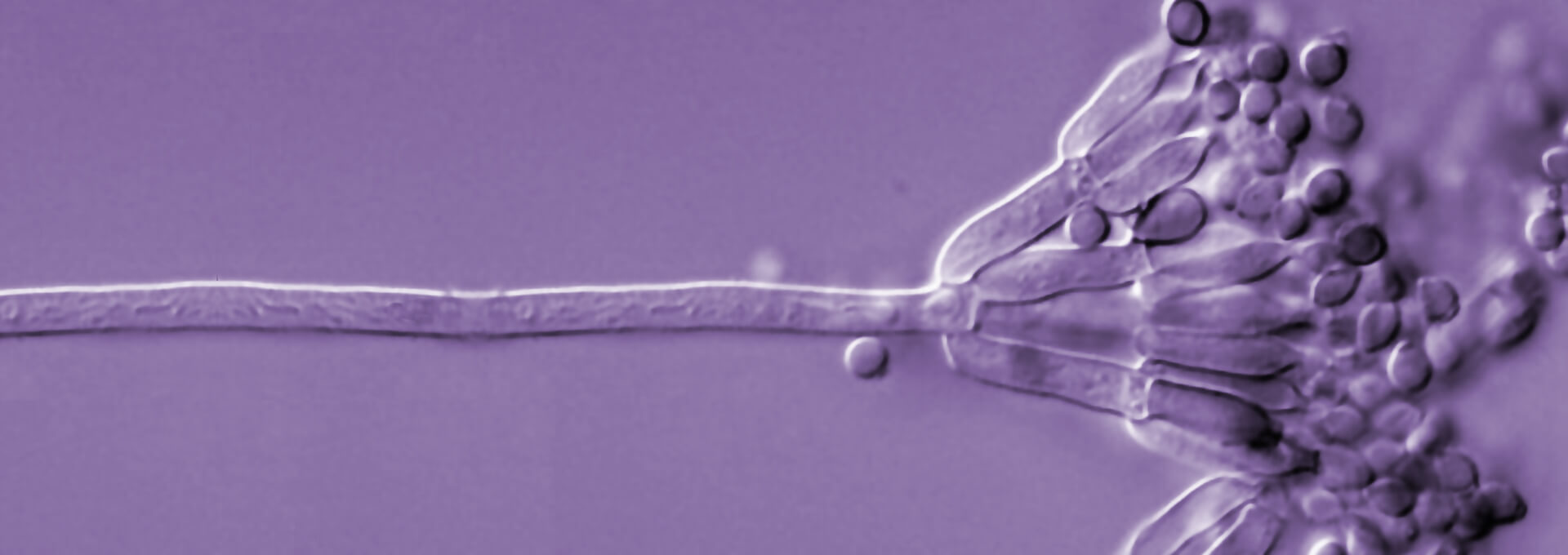The Moldy Nightmare: Questions and Answers, Part 2

[Editor’s Note: The following questions were submitted during the Oct. 22 breakfast session, Mold Contamination and Remediation—The Moldy Nightmare, of the 2020 PDA Pharmaceutical Microbiology Conference. The speaker, Ziva Abraham, an industry-leading mycologist, drafted answers to the questions. Questions were lightly edited for readability, and the Q&A’s were organized into four broad categories: Mold Control, Disinfectants, Mold Identification, and Specific Molds. Part 1 of this article, published on Jan. 5, includes the Q&A for the first two categories.]
Identification
Question
Should mold colonies be read on the fifth or seventh day of incubation?
Answer
Many deuteromycotous mold such as Aspergillus, Penicillium, Paecilomyces, etc., are fast growers. By day 5, many of these fast-growing mold may sporulate and create additional colonies or cover the entire plate in a fungal mat. Both these scenarios will lead to false positive results.
It is best to count colonies on day 3 and check on day 5. This way the day 3 read will allow counting the colonies of fast-growing mold and day 5 read will allow counting colonies of slower growing mold.
Question
What are the best methods/technologies to definitively identify fungi?
Answer
A large and diverse library in an identification system/identification service is the key to correct identification and reduced chances of unidentified isolates.
Question
When building a mold identification SOP, if you want to include a requirement to save identified contaminants in a library, how would you recommend storing them?
Answer
Mold can be cryopreserved or lyophilized. There are services available for both these methods of preservation. Cryopreservation can also be done inhouse using liquid media and 10-15% glycerol. If cryopreserved in-house, procedures must be established to perform periodic checks for purity of the cultures.
Question
You mentioned earlier that Mold identification should be confirmed by looking under microscope. Do you think this is necessary even with sequence-based identifications?
Answer
Sequence-based identification is ideal, microscopy and microscopy techniques give an inclination of the mold type and its probable source so that while waiting for the identification results, investigation and remedial actions can be initiated.
Question
Often mold identification results are noted as “mycelia sterilia” or “unidentified.” What is the reason behind these results?
Answer
“Mycelia sterilia” are rare in nature. Such results are normally generated by a laboratory when they cannot get the mold to sporulate while using conventional identification methods.
Unidentified mold as a result from any conventional method used can be attributed to no sporulation. Non mycologists who do not comprehend the growth requirements of the mold in question may not be able to provide nutritional growth media for sporulation purposes.
On the other hand, an unidentified mold result from a phenotypic, proteotypic, or genotypic ID system alludes to some key factors such as the mold not catalogued in the system’s library, mixed culture or laboratory error when preparing the sample to run on the system.
Question
How do you categorize mold into weak or strong? is there a list that can be referred to?
Answer
Colorless deuteromycotous fungi are weaker than colored deuteromycotous fungi and ascomycotous fungi. Among the zygomycotous fungi, the asexual spores are weaker than the sexually produced zygospores.
Specific Molds
Question
From the IDs obtained, how does one understand the sexual stage of the mold?
Answer
If the ID system and the fungal identification service provider keeps up with the taxonomy and nomenclature changes, the result will be reported in the sexual stage of the fungus. It is up to the microbiologist to research the asexual stage to assess patient risk. Note that the sexual stage is hard to kill and asexual stage is most infectious.
Question
What is the likelihood that these molds will reproduce sexually in our facilities, as the conditions are extreme for mold? Is it more likely we will only see the asexual spores?
Answer
There is a likelihood of all mold that have an anamorphic and teleomorphic phase to be present at both stages in the cleanroom. Depending upon the identification system or methodology used, the result may be reported in the asexual or sexual name of the mold. The asexual stage is the one that is the most infectious while the sexual stage is harder to eliminate. It is advised that no matter the identification result, the laboratory should research if the mold has both phases and address remediation as well as conduct a pathogen specific assessment accordingly.
Question
Do you have a top ten list of molds that all pharmaceutical companies should be on the ‘look out’ for?
Answer
The objectionability of mold depends on the mode of administration of the product, the immune status of the patient and many other factors. Additionally, in-house mold species may be different depending upon the geographical location, facility design and effectiveness of contamination control procedures. Hence, a list of objectionable mold cannot be generated for industry at large.
Question
Do you have experience with Talaromyces ruber? What is the best way to get rid of them from the incubators and cleanrooms?
Answer
Talaromyces ruber is described as a sexual state of Penicillium rubrum that produces soft walled ascomata covered with interwoven hyphae. Penicillum is the asexual phase while Talaromyces is the sexual phase; if the sexual stage is not eliminated, it will produce asexual spores and the cycle of asexual and sexual reproduction will continue. As incubators are ideal breeding ground for mold, it is recommended to disinfect the incubator using a sporicidal agent followed by a wipedown on frequent basis. Water pans or humidity generating tanks should also be cleaned frequently.
Question
If the T. ruber is still recovered after the VHP, what other things can we try to eliminate it if we recover it in our samples in Grade C clean room areas? We recovered it mostly during operational environmental monitoring.
Answer
Talaromyces ruber is described as a sexual state of Penicillium rubrum that produces soft walled ascomata covered with interwoven hyphae. It would be beneficial to understand where exactly the mold is found, and if it is found in the same general area. Fogging is as successful as the effectiveness of the fog chemistry to kill the organism, the capability of the fog to reach the source of the contamination, and the buoyancy the fog is. Bouyancy of the fog is a key parameter as the fog should stay long enough in the air and should reach all areas in the room.
It is recommended to trend the contaminant and try and find its route of entry as well as use the trend to understand if it is localized within the cleanroom, from where it is proliferating and spreading.
Question
How to get rid of Cladosporium?
Answer
Cladosporium likes the lower temperatures of 20 to 25°C. Beyond being brought into the cleanroom via foot and wheel borne traffic, it proliferates in niches where there is moisture and lower temperatures. That being said, it can also grow in warmer temperatures as well.
Auditing cold rooms and refrigerators is a good start. It is also recommended to inspect labels of vials stored in coldrooms as paper and glue are used as a carbon source by most mold. Having an informational monitoring program for coldrooms and a routine cleaning and disinfection program may reduce the occurrence of this mold. Cladosporium sporulation method makes it very proliferous, it sporulates in branching chains of conidia which are very small and disseminate easily.
Question
Cladosporium species found in air samples, does it point to any source?
Answer
Any contamination on the floor can become airborne in a cleanroom due to air patterns and movement. If Cladosporium is not recovered on the floors at all it is beneficial to look at the abiotic factors that help it proliferate. Cladosporium is prevalent in coldrooms and refrigerators as it prefers the colder temperatures. It would be beneficial to audit these sources.
It is recommended to trend the most common sampling points where Cladosporium is recovered and look for abiotic sources or airflow patterns which may explain this phenomenon.
Cladosporium creates branching chains of conidia, in short many more spores than most fungi, hence it is a very common mold recovered in cleanrooms.



 Ziva Abraham has over 35 years of academic, research, clinical and industrial experience in microbiology, and quality assurance. Ziva has received her Master’s Degree in microbiology with a focus on Mycology and has conducted research on developing microbial Insecticides using entomogenous bacteria and fungi towards her Ph.D. degree. Her career also includes founding and managing clinical laboratories for Maccabi Medical in Israel. She uses her extensive experience to teach why assessing risk of microbial contamination should be in the forefront of any company that has products for human/veterinary use. Her experience in clinical laboratories has provided her with the framework to understand the effects of microbial contamination in products from a patient safety perspective. Ziva is also the founder and CEO of Microrite, Inc. a California based consulting and training firm with a focus on microbial and particulate contamination control.
Ziva Abraham has over 35 years of academic, research, clinical and industrial experience in microbiology, and quality assurance. Ziva has received her Master’s Degree in microbiology with a focus on Mycology and has conducted research on developing microbial Insecticides using entomogenous bacteria and fungi towards her Ph.D. degree. Her career also includes founding and managing clinical laboratories for Maccabi Medical in Israel. She uses her extensive experience to teach why assessing risk of microbial contamination should be in the forefront of any company that has products for human/veterinary use. Her experience in clinical laboratories has provided her with the framework to understand the effects of microbial contamination in products from a patient safety perspective. Ziva is also the founder and CEO of Microrite, Inc. a California based consulting and training firm with a focus on microbial and particulate contamination control.